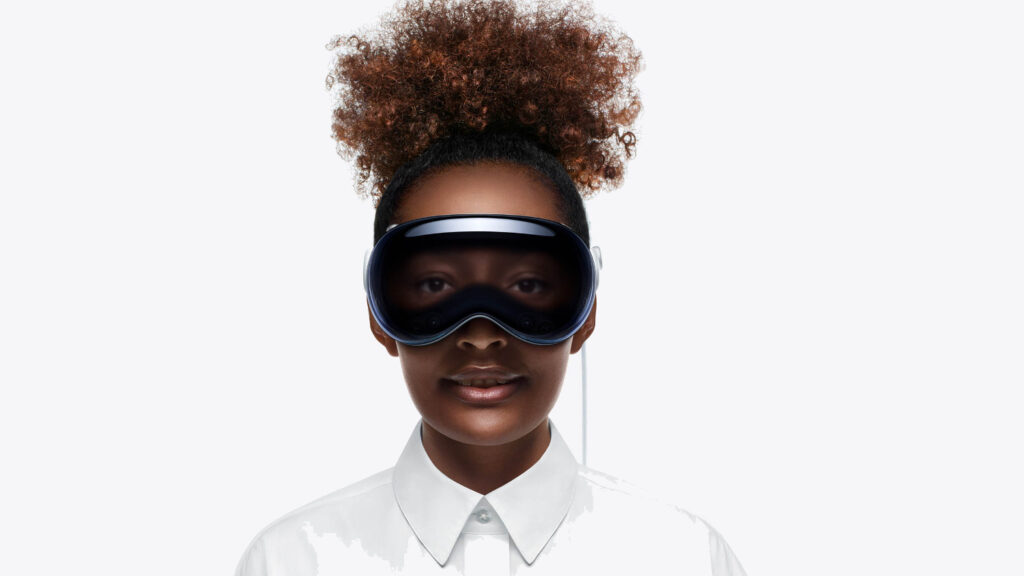Apple’s XR headset debut is unlikely to immediately impact most product development workflows, writes Stephen Holmes, but the arrival of the Vision Pro seems set to supercharge the wider headset market
Goggle-up fanboys. It’s February and the launch of Apple’s latest piece of hardware, the Vision Pro, has sent the world crazy for ‘spatial computing’, or extended reality (XR), if you’re not fluent in Cupertino-speak.
I’m writing this just a few days after the headset’s launch and it’s already become a product that’s impossible to avoid. Social media is full of people looking like idiots by wearing the headset in all manner of scenarios. From the attentionseeking chap on a gym treadmill, to the idiotic car driver, there’s a seemingly endless number of cringeworthy ‘My First Trial’ videos, where men of a certain age waddle around their homes wearing a big ol’ headset.
The virtual reality boom of the mid- 2010s left many early adopters cold and likely with an early Oculus Rift abandoned in a drawer somewhere.
We’ve seen this sector claw back some favour in the world of enterprise technology. The practicality of workflows has increased beyond lengthy data translations. The hardware has elevated itself to mind-blowing levels, albeit at often eyewatering prices.
Seeing how Nissan’s automotive interiors team is using Varjo’s headsets alongside a custom seating rig and powerful workstations was a brilliant moment of tech clarity. This was a purposebuilt, turnkey solution for solving a problem and providing options for collaboration and quick decision-making.
But not everyone is running a studio that boasts the kind of funding that a global automotive giant has at its disposal.
Mass adoption?
Apple entering a new hardware sphere is often a harbinger of mass adoption. The hype cycle is settling and the real payoffs may be just around the corner.
A lot of what the Vision Pro can do today is the stuff of novelty, but the potential for Apple becoming an established player in this sector means it will draw serious interest, and likely an ecosystem and apps will follow. Just look at how the Apple Watch has evolved to add GPS, health tracking and more.
We could leave it there, but this is where it gets interesting for me. The iPhone might have wiped out the Blackberry, but there’s little evidence that this same scenario will play out in the field of XR.
It’s a bet that others are making, too. We’ve already mentioned Varjo and its design review splendour for enterprise users, but there’s been a steady stream of new, top-spec headset from other suppliers, too.
VRgineers, producer of high-end 8K resolution set-ups, focuses on high-end viz and pilot training.
HTC, a supplier that previously clung to the consumer market, now offers a Vive XR Elite version. This brings full XR video passthrough, inbuilt tracking, 1,920 x 1,920 resolution with 90hz refresh rates and bundled with a body tracking bundle for under £1,500.
Then there’s Sony, which has only just arrived to the party with its first nongaming headset. Developed specifically for designers and engineers in partnership with Siemens, the headset boasts a whole stack of technologies derived from Sony’s considerable experience across vast swathes of consumer and enterprise technology.
And all this is without mentioning challenger brands solely focusing on XR, such as Magic Leap and Lynx, or the steady improvements seen among more consumerfocused products.
Apple’s arrival in a hardware category typically signifies broader interest, increased uptake and a chance for swifter development
The game’s not over yet
This wouldn’t be the first time that Apple has bucked a trend, with the desirability of its products to the layman (as well as a horde of foaming-at-the-mouth, dedicated fans) capable of changing an industry overnight.
However, I sense that these other brands are far from laying down their arms in surrender at this point. Quite the opposite. Apple’s arrival in a hardware category nowadays signifies broader interest, increased uptake and a chance for swifter development. A rising tide lifts all boats, and all that.
If Apple is now doing XR, then the whole sector must have progressed beyond that dusty old headset languishing forgotten in a drawer. In short, XR is worth another look, and there’s plenty to see out there right now.
Image above: The Apple Vision Pro has already begun shipping in the US — but will it matter to product designers and engineers? (Credit: Apple)
This article first appeared in DEVELOP3D Magazine
DEVELOP3D is a publication dedicated to product design + development, from concept to manufacture and the technologies behind it all.
To receive the physical publication or digital issue free, as well as exclusive news and offers, subscribe to DEVELOP3D Magazine here






